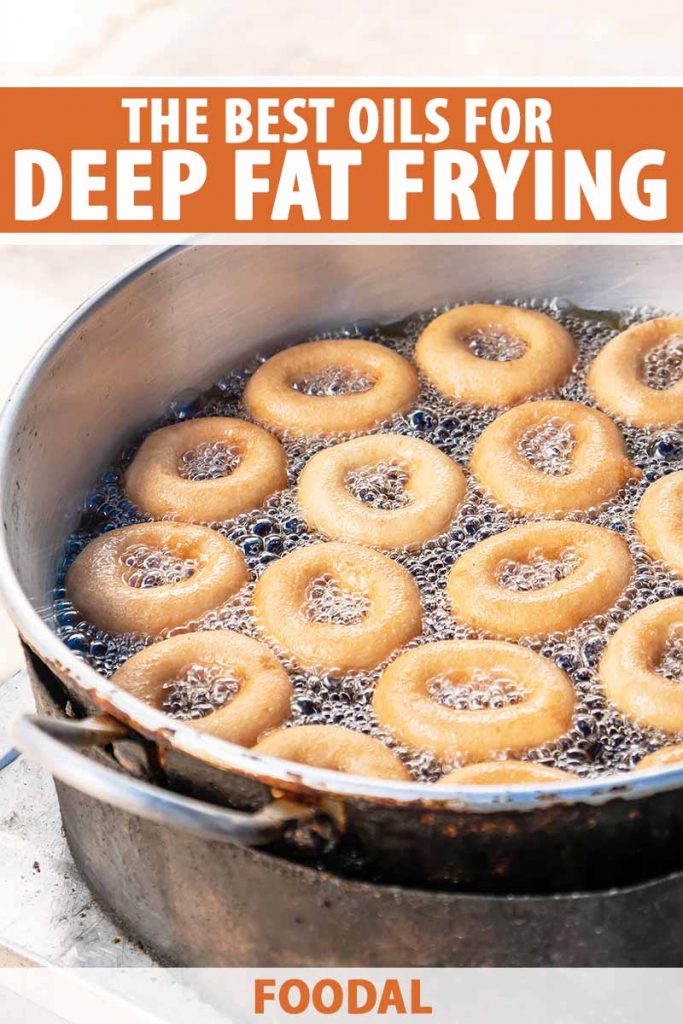Do you like shrimp tempura and Southern fried chicken? Onion rings and French fries? Oreos, ice cream, pickles, and anything you can think of batter-dipped and plunked into a pot of glistening, frothing, boiling oil?
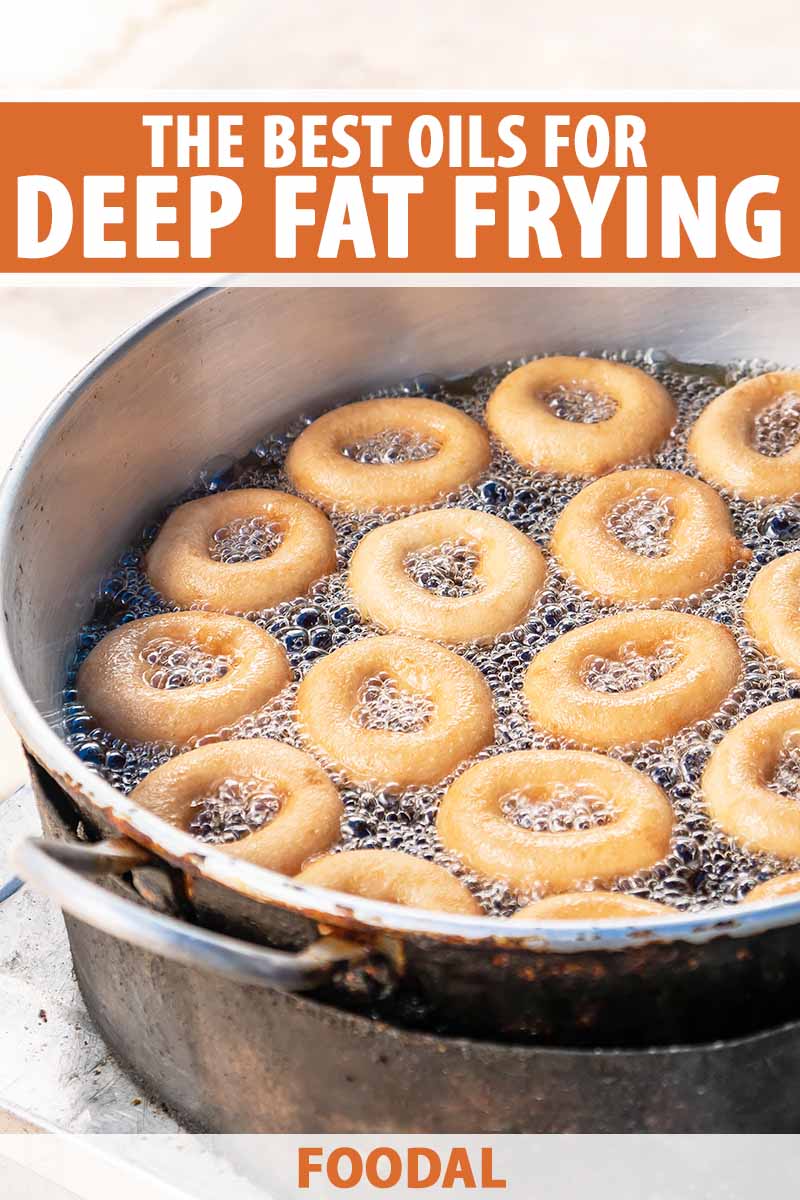
If so, you have a serious taste for deep fat frying, a cooking technique that submerges food in hot fat to render it crisp and golden outside and moist and tender inside without penetrating it or imparting any flavor of its own.
Read on to learn about deep fat frying, the importance of smoke points, and the fat content of high-heat frying oils. And get tips for buying heart-healthy, cost-effective products.
Here’s what we’ll cover:
What You’ll Learn
Let’s go into the kitchen.
What Is Deep Fat Frying?
We cook in plant-based oil or animal fat in a shallow pan when we fry. To deep fry, we use a deeper pan or pot to submerge foods in at least three inches of hot liquid heated to approximately 350°F. The result is a crisp product with sealed-in moisture and no oil penetration.

From cauliflower to chicken, pickles to potatoes, and tempura to turkey, we love our deep-fried foods crunchy, hot, and golden brown. The secret to success is fast cooking over high heat with a product that doesn’t burn, which brings us to the topic of smoke points.
Best Oils for Deep Frying: Smoke Point Comparison
Oil’s smoke point is the temperature at which it burns, turning brown and cloudy, and emitting smoke.
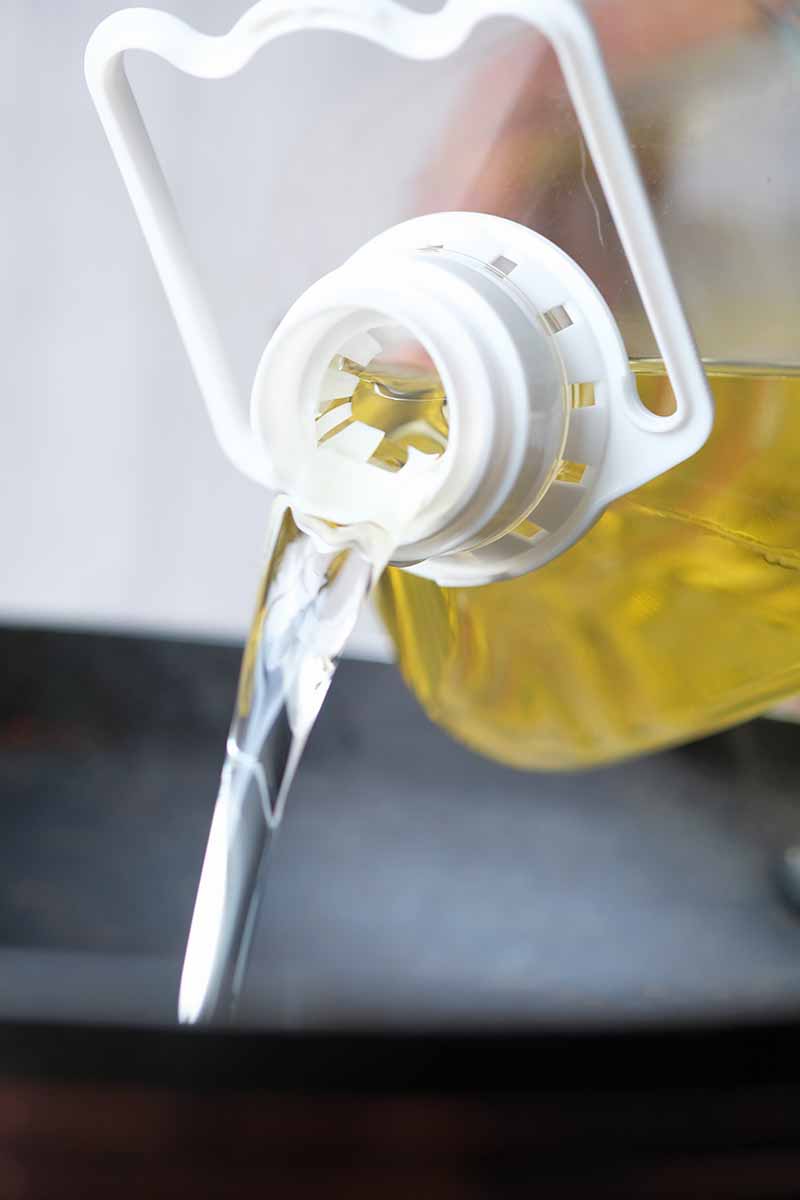
Burning emits toxins and should be avoided. Products with a high smoke point are “stable,” as they are less likely to burn during cooking.
The point at which oil burns varies by type, with the lightest color products having the greatest tolerance for high heat because they have had the greatest amount of impurities removed through refining.
To deep fry, a product should have a smoke point of at least 400°F. The following products have smoke points suitable for deep frying. All are refined except as noted:
- Almond 430°F
- Avocado 520°F
- Beef Tallow (rendered beef fat) 480°F
- Canola 400°F
- Clarified Butter (ghee) 482°F
- Corn 450°F
- Cottonseed 421°F
- Grapeseed 399°F
- Peanut 450°F
- Safflower 510°F
- Sesame (semi-refined) 450°F
- Soybean 466°F
- Sunflower (semi-refined) 450°F
- Vegetable Blend 400 to 428°F
The integrity of these smoke points depends upon a few factors.
Exposure to heat, light, and oxygen as these products age in storage can cause oxidation or chemical changes that reduce heat tolerance and cause rancidity.
Food particles that drift into the oil from batter-dipped foods and the length of cooking time further reduce a product’s tolerance for high heat. Keep this in mind if you strain and reuse your cooking oil.
Now, let’s shop.
Purchase Considerations
Knowing which products are suited to high-heat cooking is only part of the story when it comes to making a purchase.
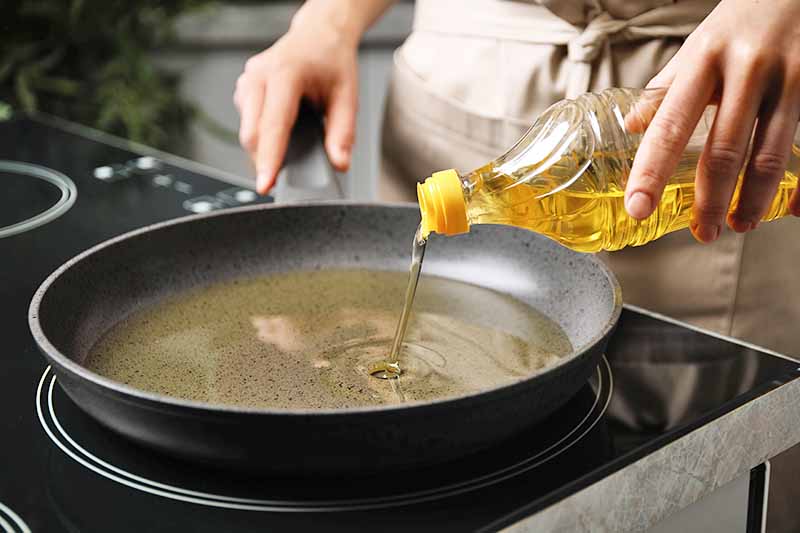
Other considerations are:
- Allergies
- Fat content
- Flavor
- Price
- Quantity
Let’s take a look at each!
Allergies
If you know me, you’ll know I’m allergy-conscious. If you choose the peanut variety as the go-to in your house, please remember to inform guests before whipping up a batch of your famous fried chicken and finding out Junior has a peanut allergy.
And be wary of vegetable blend products, as they may contain various fruits, grains, nuts, and seeds.
Fat Content
Monounsaturated and polyunsaturated fats are beneficial because they can help to lower LDL or bad cholesterol. Saturated fats are considered unhealthy because they can increase our LDL.
The following are USDA dietary guidelines with regards to fat for 100-gram servings of each product, rounded to the nearest tenth of a gram:
- Almond saturated, 8.2 g, monounsaturated 69.9 g, polyunsaturated 17.4 g
- Avocado saturated 11.6 grams, monounsaturated 70.6 grams, polyunsaturated 13.5 grams
- Canola saturated 7.36 g, monounsaturated 63.3 g, polyunsaturated 28.1 g
- Corn saturated 13.4, monounsaturated 27.7 g, polyunsaturated 52.9
- Cottonseed saturated 25.9, monounsaturated 17.8, polyunsaturated 51.9
- Grapeseed saturated 9.6 g, monounsaturated 16.1 g, polyunsaturated 69.9
- Peanut saturated 16.2 g, monounsaturated 57.1 g, polyunsaturated 19.9 g
- Safflower saturated 7.5 g, monounsaturated 75.2 g, polyunsaturated 12.8 g
- Sesame saturated 14.2 g, monounsaturated 39.7, polyunsaturated 41.7 g
- Soybean saturated 15.6, monounsaturated 22.8 g, polyunsaturated 57.7
- Sunflower saturated 10.3 g, monounsaturated 19.5 g, polyunsaturated 65.7 g
- Vegetable Blend saturated 13.7 g, monounsaturated 41.9 g, polyunsaturated 41.2 g
Canola and safflower are at the top of the list with their low saturated and high monounsaturated fat contents.
Flavor
It’s best to use a product with a neutral taste for frying. Except for the earthy tones of avocado, the buttery notes of ghee, and the mild nuttiness of almond and peanut, the varieties noted above do not impart a distinctive flavor to fried foods.
Price
Almond, avocado, ghee, peanut, and sesame are expensive compared to their neutral, high smoke-point counterparts. And while ghee and peanut are readily available, it may be harder to locate avocado products.
In my area, it’s not on the shelf at the local grocery chain and is considered a specialty item elsewhere, which automatically increases the price.
Quantity
And finally, specialty fats like avocado will likely come in smaller containers, making them more cost-effective as a drizzle or dressing ingredient than three inches deep in a fryer.
The common neutral products cost less and come in economy size, bringing me to my last point:
When purchasing, check the expiration date and consider whether you’ll use an entire economy size bottle by then. As mentioned, oxidation lowers heat tolerance and promotes rancidity over time. If you have a foul-smelling bottle on the shelf, discard it in the trash.
Deft Deep-Frying
Whether you use a traditional pan, one with a basket insert, or a fry machine, it’s time to achieve stellar results with a flavor neutral, high smoke point oil that produces a crispy crust and moist center.
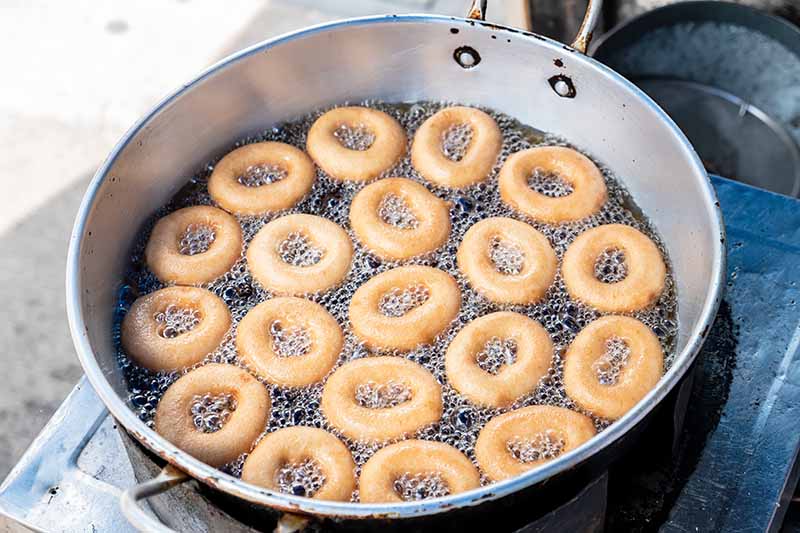
From apples to zucchini, there’s a mouthwatering array of foods to try. How about deep-fried vegan jalapeño poppers? Find the recipe now on Foodal.
While you devour your favorites, let the fat cool. Then pour it into an unwanted container that you’re ready to discard and dispose of it in the regular trash, rather than risk pipe clogging.
And finally, a word of safety advice:
There are two firefighters in my family, and I need you to know that grease fires are all too common.
Always add food to your hot liquid with tongs, not your hands, and never add water to boiling fat.
Respect the smoke point of your cooking oil, because once reached, the flash point and fire point are soon to follow, leaving you scurrying for a fire extinguisher and phoning for help.
Skills and safety. You’re good to go.
Do you deep fry? What tips can you share with our readers?
If you found this guide helpful and want to read more about home frying, we recommend the following:
- Best Home Deep Fryers for Fish, Fries, and More
- Canola vs. Rapeseed: What’s the Difference?
- Frying vs. Saute Pans: What’s the Difference?
© Ask the Experts, LLC. ALL RIGHTS RESERVED. See our TOS for more details. Uncredited photos via Shutterstock.
About Nan Schiller
Nan Schiller is a writer from southeastern Pennsylvania. When she’s not in the garden, she’s in the kitchen preparing imaginative gluten- and dairy-free meals. With a background in business, writing, editing, and photography, Nan writes humorous and informative articles on gardening, food, parenting, and real estate topics. Having celiac disease has only served to inspire her to continue to explore creative ways to provide her family with nutritious locally-sourced food.

